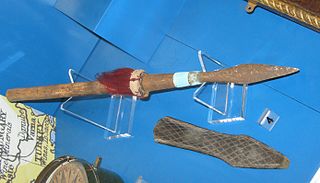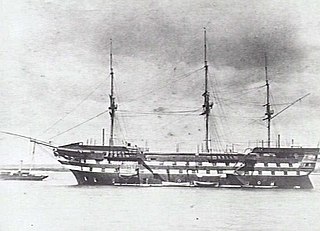See also
- HMS Frederick Bush - Castle-class trawler in service from May 1918 to her sale in 1922
- HMS Frederick William was an 86-gun screw-propelled first-rate ship of the line
Three vessels named Frederick have served the British Royal Navy (RN). In each case, the service was brief.

The Royal Navy (RN) is the United Kingdom's naval warfare force. Although warships were used by English and Scottish kings from the early medieval period, the first major maritime engagements were fought in the Hundred Years' War against France. The modern Royal Navy traces its origins to the early 16th century; the oldest of the UK's armed services, it is consequently known as the Senior Service.
Fifteen ships of the Royal Navy have been named HMS Enterprise while another was planned:
Nine ships of the Royal Navy have borne the name HMS Albion after Albion, an archaic name for Great Britain:
The Royal Navy has used the name Comet no fewer than 18 times:
Two ships of the Royal Navy have borne the name HMS Duke of York, after numerous holders of the title of Duke of York :
Several ships of the Royal Navy have been named HMS Howe, after Admiral Richard Howe:
Fifteen ships of the Royal Navy have borne the name HMS Ranger

HMS Hydra was the lead ship of her class of wooden steam paddle sloops of the British Royal Navy, launched in 1838 at Chatham Dockyard. After taking part in operations during Syrian War in 1840, she then served on anti-slavery operations and also as a survey vessel. She was scrapped in 1870.
Ten ships of the Royal Navy have borne the name HMS Confiance:
Three vessels have served the Royal Navy, albeit briefly, under the name HMS Charlotte.
Five vessels of the Royal Navy have been named HMS Harlequin.

The Irene incident of 1927 was a significant event of the British anti-piracy operations in China during the first half of the 20th century. In an attempt to surprise the pirates of Bias Bay, about sixty miles from Hong Kong, Royal Navy submarines attacked the merchant ship SS Irene, of the China Merchants Steam Navigation Company, which had been taken over by the pirates on the night of 19 October. The British were successful in thwarting the hijacking though they sank the ship.

HMS Frederick William was an 86-gun screw-propelled first-rate ship of the line of the Royal Navy.
HMS Duff (K352) was a British Captain-class frigate of the Royal Navy that served during World War II. Originally constructed as the United States Navy Buckley class destroyer escort USS Lamons (DE-64), she was transferred to the Royal Navy before she was completed.
The second HMS Whitaker (K580), and the first to enter service, was a British Captain-class frigate of the Royal Navy in commission during World War II. Originally constructed as a United States Navy Buckley class destroyer escort, she served in the Royal Navy from 1944 to 1945.

The second HMS Foley (K474) was a British Captain-class frigate of the Royal Navy in commission during World War II. Originally constructed as the United States Navy Evarts-class destroyer escort USS Gillette (DE-270), she served in the Royal Navy from 1943 to 1945 and in the U.S. Navy as USS Foley (DE-270) from August to October 1945.
HMS Kingsmill (K484) was a British Captain-class frigate of the Royal Navy in commission during World War II. Originally constructed as the United States Navy Evarts-class destroyer escort DE-280, she served in the Royal Navy from 1943 to 1945 and then in the U.S. Navy as USS Kingsmill (DE-280) from August to October 1945.

HMS Spey was a sixth rate post ship, launched for the Royal Navy in 1814 towards the end of the Napoleonic Wars. She had a short naval career, serving on the St Helena and Malta stations. While on the Malta Station in 1819, she was instrumental in the apprehension of a British pirate vessel.
Six vessels of the Royal Navy have been named HMS Sylph after the air spirits known as sylphs: